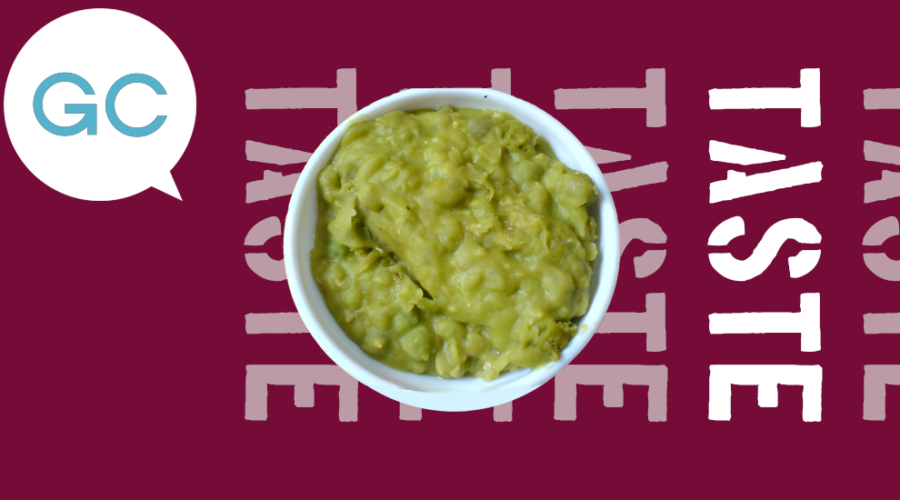There’s something profoundly comforting about a dollop of mushy peas squeezed onto the plate next to your pie, or in a Styrofoam pot with your chippy tea.
Often dismissed by food snobs as some kind of unspeakable green mush, these tasty legumes represent far more than just a side dish – they’re a cornerstone of northern England’s culinary identity and a testament to the beauty of unpretentious food.
An unsung hero of British cuisine
While the south may take pride in fancy gastro pubs and trendy small plates, the north has always known that true culinary satisfaction often comes in the form of straightforward nosh. It’s not that we don’t have fancy stuff, we do, it’s just that we haven’t lost sight of the wonders of traditional stodge.
Mushy peas, with their vibrant green hue and unusual texture, embody this philosophy perfectly. Made from marrowfat peas that have been soaked and slowly simmered, mushy peas add a substantial dollop of comfort to a dish.
More than just a side dish
In chip shops across Lancashire, Yorkshire, and beyond, mushy peas serve as more than mere accompaniment – they’re an integral part of the meal.
Their texture provides the perfect contrast to crispy battered fish or flaky pie crust, while their subtle sweetness cuts through the richness of gravy and meat.
They’re also surprisingly versatile: spoon them alongside a Sunday roast, serve them as a bed for perfectly poached fish, or try whatever you want with them. There are no rules. (Ok, there are some rules – see below.)
In Sheffield chippies, and some further afield, you can also buy a pea fritter for less than a quid. While you might be imagining something like a sweetcorn fritter made with peas, you’d be wrong. A pea fritter is essentially a scoop of mushy peas that’s been deep fried in batter.
The textural contrast between the crunch of the batter and the mush of the peas is honestly heaven.
Northern identity in a bowl
Mushy peas represent everything that make northerners proud: they are unpretentious, satisfying, and refreshingly honest. In a world of food fads and Instagram-worthy plates, mushy peas remain steadfastly themselves – simple, and deeply satisfying.
Walk into any proper northern chip shop and you’ll find them proudly displayed, piping hot in their metal tray. There’s no artisanal twist, no fusion version, no deconstructed interpretation.
They’re just mushy peas, and that’s precisely what makes them perfect.
How to eat mushy peas
Every northerner has their preferred way of enjoying mushy peas.
Some swear by adding vinegar, creating a tangy contrast to their natural sweetness. Others prefer them straight up, appreciating their pure, unadulterated flavour. You might find them served with pepper, or they might come with a knob of butter melting into their warm depths.
The most important rule? They must be steaming hot. Cold mushy peas are a travesty that no self-respecting chef would serve. They should steam slightly when the spoon breaks their surface, so they warm you from the inside out as you eat.
A nutritional bonus
While we don’t eat them for their health benefits (this is comfort food, after all), mushy peas pack a surprising nutritional punch. They’re high in fibre and protein, low in fat, and count as one of your five a day.
It’s almost as if generations of northerners knew what they were doing.
We need to talk about the mush
Yes, they’re mushy. And yes, their texture might take some getting used to for the uninitiated. But that’s precisely what makes them special.
They remind us that texture is about more than just crunch – it’s about comfort, satisfaction, and the feeling of being well-fed. All the more important as we’re plunged into chilly autumn evenings and looming winter nights.
So next time someone turns up their nose at this emerald delicacy, remind them that they’re missing out on one of British cuisine’s most underappreciated treasures.
Mushy peas aren’t just food – they’re a cultural touchstone, a working-class hero, and most importantly, they’re absolutely delicious.
Image: Simon Lieschke

